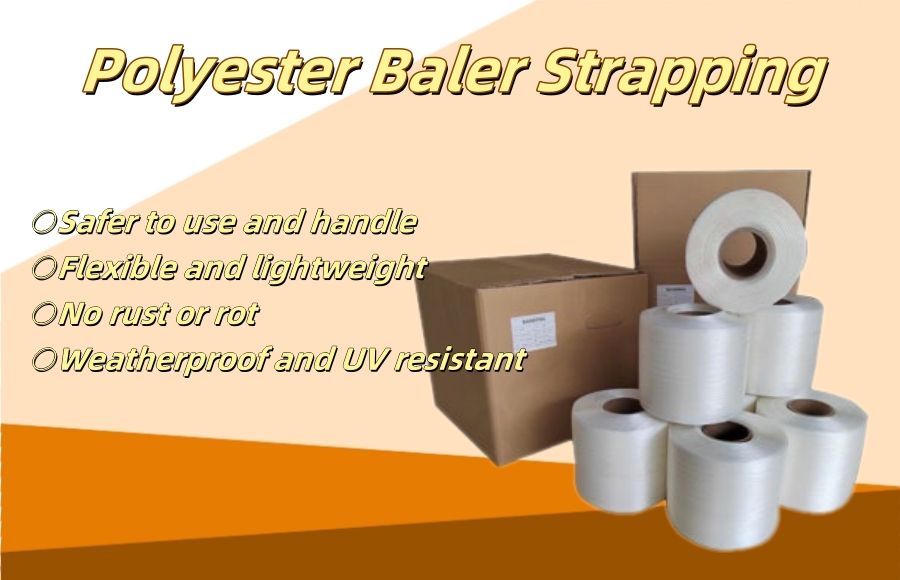In the modern world of recycling, the need for efficient, reliable, and durable materials to manage waste has never been more critical. One of the key components in the recycling process, especially for cardboard and plastic waste, is baler strapping, also known as baling tape. This product plays a crucial role in binding and securing compressed waste into bales, making it easier to handle, transport, and store materials for recycling.

What is Baler Strapping?
Baler strapping is a type of strong, flexible material used to tie bales of cardboard, plastic, or other recyclable materials together after they have been compressed using a vertical baler. The strap is typically made from a composite material or fiber, designed to withstand high levels of tension and pressure during the baling process. It ensures that the bales remain intact during storage and transit, reducing the likelihood of materials becoming loose or spilling.
Baler strapping is available in various sizes and strengths, depending on the type of waste being baled and the specific requirements of the recycling facility. This makes it an incredibly versatile tool for industries ranging from waste management to packaging.
Key Benefits of Baler Strapping
Improved Efficiency: Baler strapping allows for faster and more efficient baling. By securing materials in tightly bound bales, it optimizes space and streamlines the handling process, ultimately improving productivity.
Enhanced Durability: Made from robust materials, baler strapping can withstand the high pressure exerted by vertical balers, ensuring that the bales remain intact throughout the recycling process. This durability reduces the risk of bale breakage, which can cause delays and increase costs.
Eco-friendly: Many baler strapping products are designed to be eco-friendly, with options that are recyclable themselves. This aligns with the growing emphasis on sustainability in the waste management industry, supporting circular economy principles.
Cost-Effective: By efficiently securing large volumes of waste into compact, manageable bales, baler strapping helps reduce transportation costs. Less space is required for storage and more material can be transported at once, leading to savings for recycling companies.
Applications in Recycling
The primary use of baler strapping is in the recycling of cardboard and plastic. In the case of cardboard, which is commonly used in packaging and shipping, baler strapping helps bind large quantities of cardboard together, making it easier to process and recycle. For plastic, which often comes in varying forms and sizes, strapping ensures that the material is securely compacted for easier transport to recycling plants.

Conclusion
In conclusion, baler strapping is an essential tool for modern recycling operations. Its ability to efficiently and securely bind bales of recyclable materials makes it indispensable in waste management. As the recycling industry continues to grow and evolve, baler strapping will remain a critical element in optimizing recycling processes, reducing environmental impact, and improving the bottom line for waste management companies. The development of stronger, more eco-friendly strapping options ensures that the recycling industry is prepared for the challenges of the future.